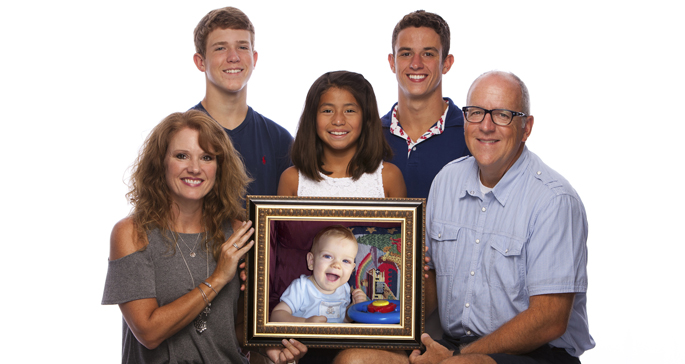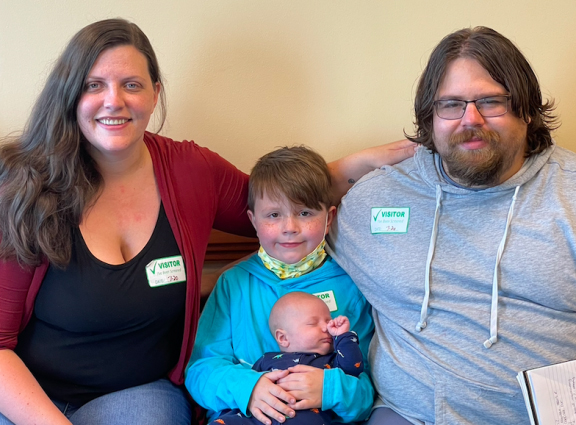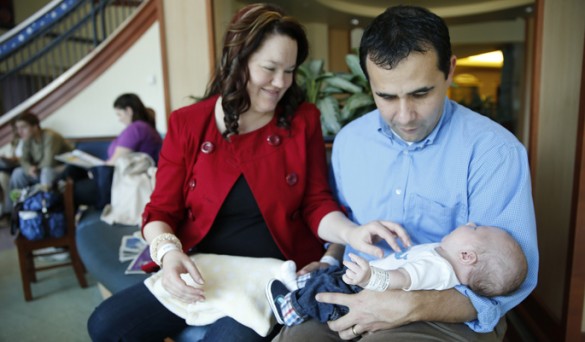
Dylan May’s 6-month-old baby photo shows a smiling face and bright blue eyes — the appearance of a seemingly happy, healthy baby.
After a normal pregnancy and perfect delivery, Dylan was the third child for Amy and Phil May, who live in Franklin, Tennessee. Dylan also had a flawless newborn screening, which involves a simple blood test at birth to check for numerous diseases — currently 69.
But in 2004, when Dylan was born, fewer diseases were included in the Tennessee newborn screening, and missing from that panel was Krabbe leukodystrophy, a genetic disease characterized by progressive neurologic deterioration and death, usually before age 2.
One out of every 100,000 children is born with the disease. Once symptoms appear, it’s too late. If diagnosed very early, it can be potentially treated with a stem cell transplant.
Dylan was 7 months old when symptoms began — struggling to suck his thumb or sit up as his central nervous system degenerated.
At 9 months old, he was diagnosed with Krabbe disease. He died 10 days before his fifth birthday in 2009.
Monroe Carell Jr. Children’s Hospital at Vanderbilt has teamed up with Hunter’s Hope Foundation, a non-profit dedicated to education, awareness, research and family care for Krabbe and other leukodystrophies, to help families like the Mays and to ensure early diagnosis and life-saving treatments are possible. Hunter’s Hope, based out of New York and named after the son of NFL Hall of Fame Quarterback Jim Kelly, recently designated Children’s Hospital a Leukodystrophy Care Network (LCN) Certified Center, one of only five in the United States.
“Hunter’s Hope Foundation approached Vanderbilt to become a LCN Center. This was a great idea for multiple reasons, including the very strong and comprehensive care currently available at VUMC for children with multidisciplinary disorders involving neurology, genetics, transplant medicine, neuroradiology and pulmonary services,” said Kevin Ess, MD, PhD, director of the Division of Pediatric Neurology at Children’s Hospital, associate professor of Pediatrics and the Gerald M. Fenichel Professor of Neurology.
Ess will serve as program director for Children’s Hospital’s LCN program. Working with Ess are Lisa Young, MD, associate professor of Pediatrics and a pulmonary specialist, and James Connelly, MD, associate professor Pediatrics, who works in hematology/oncology and stem cell transplants.
With strong and relentless support from families like the Mays, Krabbe and other leukodystrophies were finally added to Tennessee’s newborn screening on July 1, 2017. Only six states — Tennessee, New York, Missouri, Ohio, Kentucky and Illinois — actively screen for Krabbe in the newborn panel. About five other states have passed legislation for screening at birth, but have yet to implement it.
“After Dylan died, we decided that no one should have to go through what we went through. We did not want another family to receive the devastating diagnosis of Krabbe and be sent home to watch their child die. Phil spent four years working to get the newborn screening implemented in Tennessee,” said Amy May, who along with her husband, Phil, sits on the Hunter’s Hope Foundation LCN steering committee.
An extensive review process and prerequisites are needed to become an LCN Certified Center. The health institution must be able to provide multidisciplinary care and be committed to innovative therapies, treatment options, expert care and information to families affected by leukodystrophies. As an LCN center, Vanderbilt will serve as a referral site for newborns and other children who test positive for Krabbe and other leukodystrophies.
“The Leukodystrophy Care Network was born out of a need for proactive, comprehensive and excellent care to children who have a life-threatening leukodystrophy. Vanderbilt is a cornerstone in this Leukodystrophy Care Network because of its centralized location and its ability to meet all the complex care needs of a child with this devastating diagnosis,” Amy May said.
Through Dylan, the Mays found inspiration to help other children.
“We have seen the results of treatment. We have seen numerous children that are playing, laughing, talking like kids who didn’t have a life-ending disease. Our hope, for children diagnosed with Krabbe, has been restored. These children can live an awesome life,” Phil May said.
The Leukodystrophy Care Network also is holding its winter meeting March 8-10 in Nashville with nearly 50 medical providers from across the United States and with family advocates expected to attend.
The group plans to tour Children’s Hospital as part of their visit.















